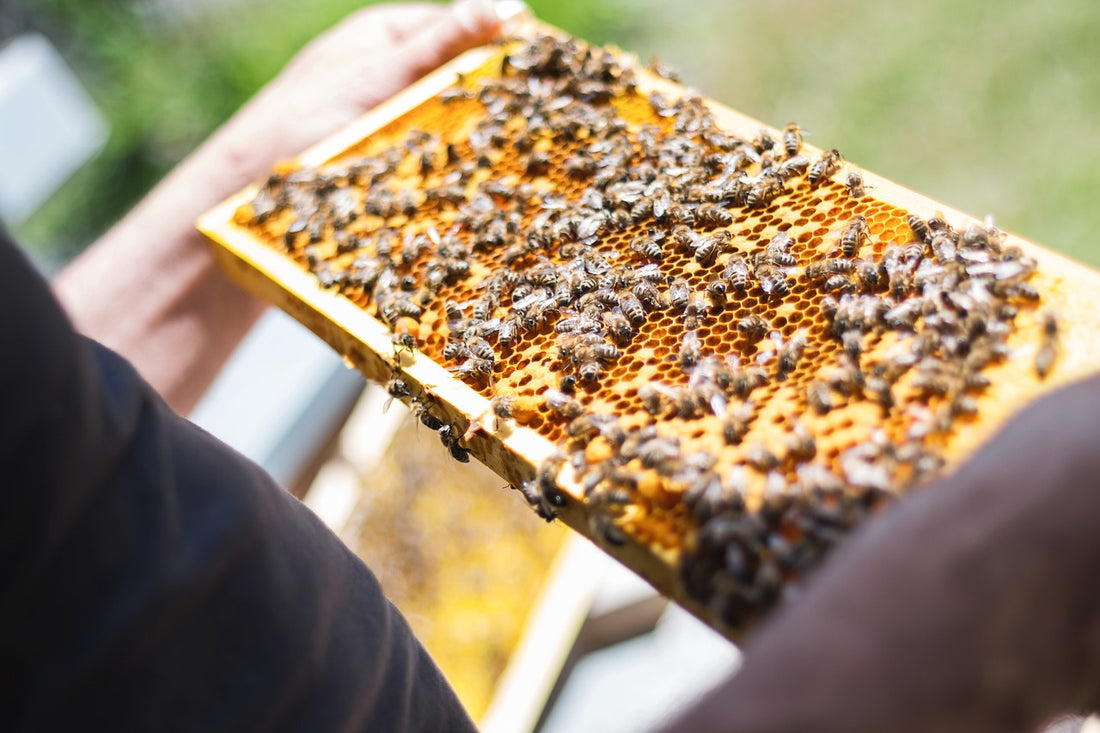
How Climate Change is Affecting Queen Bees and Beekeeping
Partager
Climate change is significantly impacting beekeeping, particularly the health and behavior of bees. This comprehensive analysis explores how climate change affects queen bees and the broader implications for beekeeping. By understanding these impacts and adapting practices accordingly, beekeepers can help ensure the health and productivity of their hives in an ever-changing climate.
Temperature Fluctuations
One of the most noticeable effects of climate change is the fluctuation in temperatures. Rising temperatures and unpredictable weather patterns can severely disrupt the queen bee's egg-laying cycle. Extreme heat can stress the colony, leading to reduced egg production and weaker colonies. Conversely, sudden drops in temperature can shock the colony, affecting its overall health.
- Impact on Egg-Laying: Consistent high temperatures can lead to thermal stress in bees, thus reducing queen's egg-laying capacity. This results in smaller and less productive colonies.
- Colony Stress: Temperature extremes can weaken the entire colony, making it more susceptible to diseases and pests.
To mitigate these effects, beekeepers should monitor hive temperatures closely and provide adequate ventilation and shading during extreme heat.
Altered Foraging Patterns
Climate change affects the availability of pollen and nectar sources, which in turn alters the foraging patterns of worker bees. These changes can lead to nutritional deficiencies that impact the queen's health and productivity.
- Nutritional Stress: A lack of diverse and abundant floral resources can lead to malnutrition in bees. This affects the queen's ability to lay eggs and the overall health of the colony.
- Foraging Disruption: Unpredictable weather can force bees to forage less, further reducing the nutritional intake necessary for a thriving colony.
To combat these issues, beekeepers should ensure a diverse range of flowering plants throughout the foraging season.
Increased Disease and Pest Pressure
Warmer temperatures can increase the prevalence of diseases and pests, such as varroa mites and nosema, which pose significant challenges to colony survival.
- Varroa Mites: These parasites thrive in warmer conditions where brood is reared for a prolonged time and can devastate bee colonies by spreading viruses and weakening individual bees.
- Nosema: This pathogen can cause significant health issues in bees, including digestive problems and reduced lifespan.
Beekeepers should implement proactive health management strategies, such as regular hive inspections and treatments, to manage these threats.
Changes in Bloom Times
Shifts in bloom times for plants due to climate change can lead to mismatches between bee activity and floral resources. This temporal mismatch affects the availability of food for the colony, potentially leading to starvation and reduced hive productivity.
- Floral Mismatch: Bees may emerge from hibernation to find that the plants they rely on for food have not yet bloomed, or have already finished blooming.
- Starvation Risk: Extended periods without adequate food sources can lead to colony starvation and collapse.
Beekeepers must stay informed about local bloom schedules and consider relocating hives to areas with more reliable floral resources.
Impact on Mating Flights
Climate change can disrupt the timing and success of queen bee mating flights. Poor weather conditions, such as increased rain or wind, can limit the number of drones available for mating, leading to poorly mated queens.
- Mating Success: Ideal weather conditions are crucial for successful mating flights. Unfavorable conditions can result in queens not mating adequately, which impacts the genetic diversity and health of future generations.
- Colony Strength: Poorly mated queens produce fewer worker bees, weakening the colony's ability to thrive and survive.
Adapting Beekeeping Practices
To mitigate the effects of climate change, beekeepers must adapt their practices. Key strategies include:
- Selecting Resilient Queen Bees: Choose queen bees bred for resilience to environmental stressors. These queens are more likely to thrive despite climate challenges.
- Supplemental Feeding: Provide additional nutrition during periods of floral scarcity. This helps maintain colony health when natural food sources are insufficient.
- Enhanced Hive Management: Implement practices to reduce colony stress, such as improving hive ventilation, shading, and using biotechnical methods to control mite populations.
Conclusion
Climate change poses significant challenges for queen bees and beekeeping. By understanding these impacts and adapting practices accordingly, beekeepers can help ensure the health and productivity of their hives in a changing climate. Stay informed and proactive to protect your colonies.
